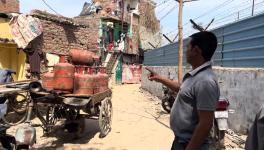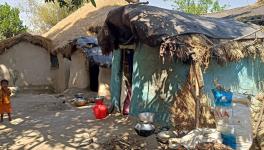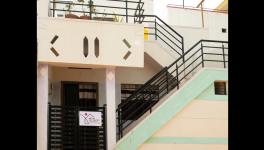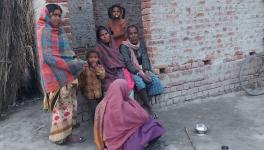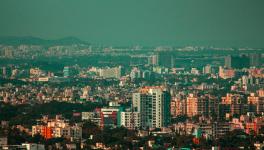PMAY: The Problem of Quantity Over Quality
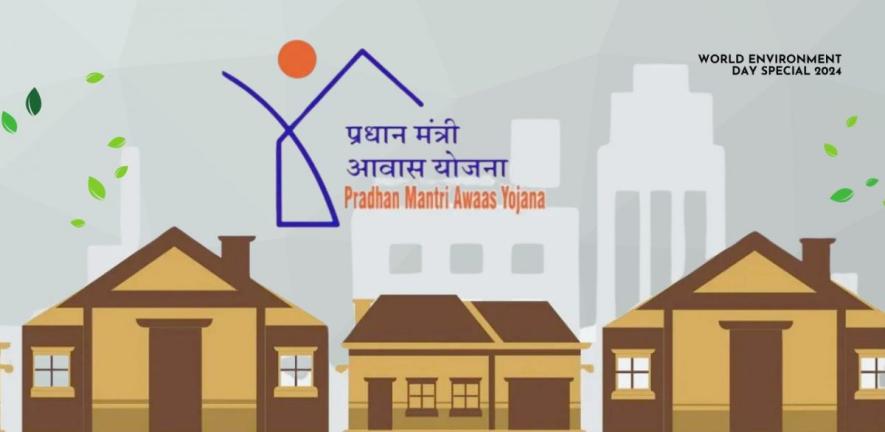
A house is much more than the four walls and roof which make it. In our society, it is also a symbol of dignity, security and well-being.
With this in mind, the Ministry of Housing and Urban Affairs (MoHUA) launched the Pradhan Mantri Awas Yojana (PMAY) or the ‘Housing for All Mission’ in 2015. The scheme has two parts— urban and rural. This assessment is focused on the urban component (PMAY-U).
The aim of the scheme was to provide every household in the country with a pucca house with basic services such as piped water supply, sanitation and 24×7 electricity by the time the nation completes 75 years of its independence in 2022. The tenure of the scheme was extended to December 31, 2024 to complete houses already sanctioned till March 31, 2022.
A house is much more than the four walls and roof which make it.
A hefty investment of ₹8 lakh crore has been made in the scheme. Of this, nearly 25 percent (₹2 lakh crore) has been contributed by the Union government, 15 percent (₹1.23 lakh crore) by state governments, and as much as 60 percent (₹4.85 lakh crore) by the beneficiaries themselves (see Graph 1: Share of investment in PMAY-U).
Graph 1: Share of investment in PMAY-U
As of May 20, 2024, 11.4 million units have been grounded and 8.32 million units have been completed. The world’s largest public housing programme not only reduced the housing deficit in the country but also set a foundation for future housing programmes.
Progress so far
PMAY-U was launched with an aim to construct 18 million dwelling units for the economically weaker section (EWS) and low-income group (LIG). This aim was based on an estimate exercise carried out by the Technical Group on Urban Housing Shortage (TG-12) in 2012.
After years of conducting demand surveys in cities, the scheme set its target to 11.2 million units. A household which does not own a house or land anywhere in the country and belongs to EWS or LIG categories, can avail the benefits of the scheme.
Andhra Pradesh (21.3 lakh), Uttar Pradesh (17.7 lakh), Maharashtra (13.6 lakh), Gujarat (10 lakh) and Madhya Pradesh (9.6 lakh) have sanctioned the highest number of dwelling units among all states and UTs.
The scheme was launched with four verticals of implementation— Affordable Housing in Partnership (AHP), In-Situ Slum Redevelopment (ISSR), Credit-Linked Subsidy Scheme (CLSS) and Beneficiary Led Construction/Enhancement (BLC).
Under AHP, houses are constructed with private sector’s involvement and receive a Central assistance of ₹1.5 lakh per unit.
Under the ISSR vertical, assistance of ₹1 lakh per unit is provided by the Union government to private developers to rehabilitate eligible slum dwellers in-situ.
A hefty investment of ₹8 lakh crore has been made in the scheme.
Under CLSS, an interest subsidy is provided to beneficiaries seeking housing loans.
Under the BLC vertical, assistance of ₹1.5 lakh per unit is provided by the Union government to beneficiaries to construct or enhance their existing shelters.
As of May 20, 2024, a whopping 63 percent of the total houses sanctioned were under the BLC vertical, followed by CLSS and AHP with 21 and 13 percent of total sanctions respectively. While the number of slum households in the country is around 14 million, only 3 percent of the total houses sanctioned fell under the ISSR vertical.
Graph 3: Vertical-wise sanctioned houses
It can be seen that a lot of Union government’s assistance has gone into supporting beneficiaries to construct or enhance their own house. Formal group housing clearly has less takers in comparison.
This indicates that newly constructed formal housing may not be conducive to the requirements of the beneficiaries. It also raises questions about whether PMAY-U is actually improving the quality of life of its target population.
Affordable rental housing amidst COVID-19
PMAY-U recognised and internalised a new housing typology during the Covid pandemic in 2020— affordable rental housing. This was done to address the millions of migrant workers and poor who were forced out of urban areas as they ran out of means to sustain themselves. Shelter was one of these means.
The Union government launched the Affordable Rental Housing Complex (ARHC) scheme to categorically improve the quality of life of migrant workers and urban poor by enabling access to affordable shelter close to the workplace. Access to essential needs such as education, healthcare, water and sanitation have been included as crucial parameters.
The strategy adopted for this scheme was to refurbish affordable housing units which had been lying vacant. So far, 83,534 such units have been identified. Of these, 5,648 have been converted into ARHCs, mainly in Chandigarh, Gujarat, Rajasthan, Uttarakhand and Jammu & Kashmir.
While this effort to address rental housing was undertaken after years of policy inaction, the volume of migrants and poor displaced due to Covid has raised concerns over the actual demand for affordable housing in our cities. This calls for fresh surveys that take into account parameters such as habitability, safety, overcrowding and so on.
Newly constructed formal housing may not be conducive to the requirements of the beneficiaries.
According to the scheme, rents are to be fixed by urban local bodies (ULBs) based on local surveys and will increase biennially by 8 percent, subject to a maximum gross increase of 20 percent over a period of five years from the date of signing the concession agreement.
A few cities which have floated tenders for retrofitting of vacant government housing projects have disclosed rents. These rents range from ₹800 to ₹4,500.
Table 2: Monthly rents set by ULBs in ARHC projects
In order to see how feasible these rents are for the poor in the context of that particular city, the Centre for Science and Environment (CSE) evaluated the rent-to-value ratio for a few of the ARHC projects. This is the ratio of annual rent divided by the market price of that unit. The higher the ratio, the more exorbitant is the rent with respect to the market value of the dwelling unit.
A benchmark was set by calculating the rent-to-value ratio of neighbourhoods in Mumbai and Delhi-National Capital Region (NCR)— two cities that reported the majority of vacant housing stock, house a majority of migrant workers, and are known for exorbitant rentals.
While the rent-to-value ratio of Mumbai and Delhi-NCR came out to be 2.63, for cities under analysis it fell in a range of 1.24 to 5.73. Therefore, we can safely say that rents of ARHC projects in most cities are also not affordable. This issue needs to be addressed by urban local bodies. Rent authorities will be instrumental in doing so.
Sustainable development through affordable housing
Affordable housing is one of the key components of SDG 11: Sustainable Cities and Communities. According to UN-Habitat, well-planned and well-designed affordable housing can reduce the environmental footprint of cities and can be an important tool for climate proofing. The location and design of houses, along with their access to basic services, are crucial.
CSE’s assessment reveals that most of the affordable housing is coming up at peripheral locations in cities. This is despite a mandatory condition in PMAY-U to earmark appropriate land for affordable housing in city master plans to avail support under the scheme.
We can safely say that rents of ARHC projects in most cities are also not affordable.
The reality is that there is a dearth of master plans for cities. Currently, 76.2 percent of the 7,953 census towns in India do not have master plans. However, due to this mandatory condition, cities are preparing or amending their master plans in an ad hoc manner. This is leading to selection of inappropriate locations with poor connectivity, thus increasing the economic and social cost of living.
Only a handful of cities and states have prioritised the need of the poor to be either located centrally or strategically connected to livelihood centres. For instance, Telangana has an in-situ slum rehabilitation policy and Ahmedabad has reserved land for affordable housing along its bus rapid transit corridor.
Affordable housing can be promoted in master or development plans by offering incentives. These incentives can be linked to various liveability standards such as walkable connections to public transport and safe access through street design interventions.
Affordable housing also needs to be linked to environmental services such as rainwater harvesting, solar rooftops, and on-site wastewater and solid waste treatment using nature-based techniques.
These services are guided by model building bye-laws, state building bye-laws and the Environmental Impact Assessment (EIA) Notification of 2006. Alignment of these with affordable housing is critical so that it contributes to sustainable development.
While PMAY-U has a provision for convergence of different schemes such as AMRUT, Swachh Bharat Mission or Solar Cities Mission, the CSE review found that environmental services are not being adequately implemented in the new housing stock.
A case for thermal comfort
In 2019, the Ministry of Environment, Forest and Climate Change (MoEF&CC) released the India Cooling Action Plan (ICAP) with the goal of providing ‘thermal comfort for all’. It set a target of reducing the cooling demand of the country by 20–25 percent and cooling energy requirement by 25–40 percent by 2037–38.
Strategies proposed in the plan include adoption of energy conservation building codes, providing thermal comfort in affordable housing, supplying energy efficient appliances and equipment, use of not-in-kind cooling technologies, and so on.
Thermal comfort needs to be integrated with the requirements of affordable housing to achieve ICAP goals. Currently, there are no thermal comfort standards in the country but it is defined by parameters such as temperature, ventilation and relative humidity as per the National Building Code (NBC).
The code provides a temperature range for each city at which humans can adapt to ambient heat. It is called India’s model for adaptive comfort (IMAC).
Interestingly, the World Health Organization (WHO) defines the same parameters for healthy housing and has been compiling thermally safe temperatures for cities, regions and countries. For instance, Thailand has estimated an indoor minimal risk temperature of 30°C and an indoor maximum acceptable temperature of 32°C.
Similarly, there is a need to identify standard indoor temperature that enables thermal comfort in India. Until we reach there, adherence to codes such as Eco Niwas Samhita (ENS) 2018 becomes important as a first step.
CSE simulated a sample of PMAY-U housing for thermal comfort based on NBC’s IMAC and evaluated energy performance with respect to ENS. The study found that most of the dwelling units in existing designs are not achieving thermal comfort and are not even compliant with ENS.
Only a handful of cities and states have prioritised the need of the poor to be either located centrally or strategically connected to livelihood centres.
The overall lesson has been that appropriate building orientation, envelope design and choice of materials (with insulation or high thermal mass) can substantially lower heat gain in buildings. These combinations need to be tailored for different climate zones and building typologies.
As part of the Indo-German Energy Programme, MoHUA is currently working in collaboration with the German government on a thermal comfort action plan for 2050 and thermal comfort standards cum guidelines to enhance thermal comfort in mass affordable housing in India under the Climate Smart Buildings programme.
The programme also supports MoHUA in implementation of the Global Housing Technology Challenge that has compiled a number of new and emerging construction technologies and walling assemblies. The key criteria for this compilation is fast-paced, structurally safe, resource efficient and sustainable qualities.
Even the ARHC scheme has this component as a Technology Innovation Grant. But the criteria for this grant— speedy, innovative and sustainable construction— is open-ended and non-binding. Therefore, it is crucial to set thermal comfort standards for different climate zones of India.
Even though new materials may make economic sense due to their speedy implementation at a large scale, they may miss achieving co-benefits of environmental sustainability. Therefore, fiscal support needs to be performance linked.
Another challenge is that the programme focuses on mass housing. Self-constructed housing, which is the typology receiving nearly two-thirds of the PMAY-U sanctions, is largely unguided in absence of any code. This aspect needs to be addressed.
Climate-responsive indigenous materials and technologies
Traditional technologies and materials such as mud, thatch, bamboo, cob walls, adobe blocks, laterite blocks, and wattle and daub are traditionally known to provide protection from extreme temperatures and improve thermal comfort. In addition, these materials are locally available, affordable and climate-responsive.
This traditional wisdom must be documented, preserved and leveraged to enable thermal comfort in modern buildings. Some architects are already doing this through hybridisation— for instance, combining concrete columns and slabs for structural strength and mud-infilled walls for thermal comfort. Such practices need to be promoted and mainstreamed, especially in affordable housing.
Traditional technologies and materials such as mud, thatch, bamboo, cob walls, adobe blocks, laterite blocks, and wattle and daub are traditionally known to provide protection from extreme temperatures and improve thermal comfort.
The good news is that the Union government has started to recognise the importance and function of these materials. Building Material and Technology Promotion Council released a Compendium of Indigenous Innovative Building Materials and Construction Technologies in 2021.
This is a great opportunity to integrate climate response with affordable housing. The PMAY scheme must formalise and incentivise the use of these materials to maximise benefits.
Rajneesh Sareen has two-and-a-half decades of experience working on sustainability in the built environment.
Mitashi Singh is a programme manager of the Sustainable Habitat Programme with the Centre for Science and Environment, New Delhi.
Get the latest reports & analysis with people's perspective on Protests, movements & deep analytical videos, discussions of the current affairs in your Telegram app. Subscribe to NewsClick's Telegram channel & get Real-Time updates on stories, as they get published on our website.










